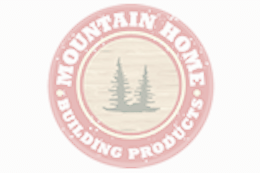How To Make Log-Home Stains Last

The purchase of a log home, is undoubtedly, a sizeable investment. With that being said, it only stands to reason one would want every part of the log-home to remain as maintenance-free as possible—whether it’s the flooring, the windows, the chinking or even the stain. But, as with any home, there will be upkeep that must be regularly factored in to ensure proper protection from UV radiation, water damage, air infiltration, insect and rodent invasions.
One important maintenance schedule should include increasing the longevity of the home’s stain. If you are wondering if your stain is in need of a re-application, you can assess the condition of your home’s stain via a good ol’ washing of the entire exterior. A yearly washing will eliminate surface contaminants such as pollen, bird feces, spider webs etc. that can prematurely compromise the logs’ finish. There are products that chemically clean the wood; but allow for 3 non-humid days for proper drying.
Once the exterior is dried, you can glean an idea of what areas need a maintenance coat of stain, keeping in mind that selecting the type of log stain that was originally used is vital—oil-based stain or waterborne latex-based stain for log-homes.
But let’s get down to the nitty-gritty of what you can actually do to keep your log-home’s stain looking beautiful and remaining durable.
1: High-Quality Stain
Don’t buy the cheapest stain! As with most things in life, you will get what you pay for; and stain is no exception. Purchase a quality stain—making that type of purchase cannot be overemphasized! Never hesitate to speak with a stain expert who truly knows what he or she is talking about in the world of stains, especially as they apply to log-homes. Preferably purchase your staining product from a log-home outlet since maintenance for log homes is not the same as maintenance for a traditional, non-log home. Make sure your staining product contains highly-effective UV protection elements that help logs resist the damaging effects of the sun.
2: Correct Cleaning Products
It was mentioned earlier that the exterior of your home should be washed in order to assess what areas of the home might require stain touch-ups. It’s vital to use the right cleaning products. Clean the logs with a chemical wash and then thoroughly rinse. Rinsing is as important as washing since any residual cleansing agent left on the surface will combat the stain’s ability to adhere.
3: The Logs’ Ends
The ends of the logs are a natural place for moisture and pest invasions to occur. Apply an extra coat of sealant over the stain in this area of the home to provide an enhanced barrier of protection.
4: Different Woods, Different Stains
A stain used for one species of wood should not, necessarily, be used for a different species of wood. Different woods require their own special staining products. Different wood types can react to the sun and change colors and the stain should accommodate those changes, depending on the color the home-owner desires. Additionally, a given stain on wood ‘A’ can stain very differently on wood ‘B’. Different stains may have to be used to achieve the same overall appearance.
5: The Sealant
The bottom line is the sealant! A high-quality sealant will thoroughly protect the stain, aiding in the stain’s durability, UV protection, color retention and protection from the constant bombardment of elements. Because stain has fewer protective pigments than paint, it absolutely must be sealed properly to ensure its longevity. A double-coating of the sealant is highly recommended every couple of years to extend the life of the stain.
When stain maintenance is followed regularly and proactively, the durability of your log-home’s stain will become maximized—giving you more time to enjoy the inside of your log-home instead of dealing with the outside!
